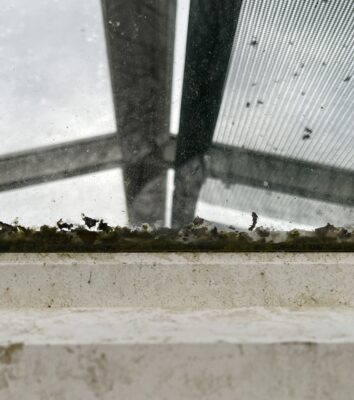Peaches and nectarines flower early in the year when there are few insects about, so hand pollination is the only way to ensure a good crop. It works best after two or three dry warm days when most of the flowers are open. When the time is right, there will be a dusting of pollen when you run a fingertip gently over the anthers. Then next move is to transfer the pollen from the anthers of one bloom to the stigma of another, using a soft artists brush, or piece of cotton wool on a matchstick. Do this over several days until every flower is pollinated. I move my small containerised patio apricot ‘Flavourcot’ into the greenhouse for pollination and to protect the blossom from late frosts, then move it back outdoors against a sheltered west facing wall when temperatures rise. The same pollination process works for indoor strawberries.
Wake tender fuchsias from their winter rest later in the month. Move them into a moderately warm greenhouse and mist with tepid water once or twice a day. At the first signs of new growth, give them a little tepid water, watering more often as growth increases.
Encourage dormant tuberous begonias into growth by putting them in trays, concave side uppermost, then covering them with peat free multipurpose with added John Innes. Water them in with a little tepid water/fungicide solution, but do not allow water into the concave centre, cover with a sheet of newspaper and maintain a temperature around 20C. Remove the newspaper when the first shoots appear, but keep them in the shade. If you are unable to provide constant heat in a propagator, wait until late April, before encouraging them into growth in the greenhouse.

Sow parsnips and carrots from early in the month sowing into modules or cutting cardboard centres from kitchen towels into approximately 15cm lengths filled with peat free seed compost. Place the tubes vertically in seed trays. (gardeners in warmer areas sow earlier, from early to mid-February). Sow three seeds per tube and thin to leave the strongest. Both resent root disturbance but can be transplanted at the final spacing before the roots become too large and the tubes gradually rot away.
It is also worth sowing a few leaves crops like lettuces, spinach and salad leaves in pots, trays or modules as a backup for outside sowings, too.
Continue to sow seed indoors of sweet peppers, tomatoes, cucumbers, aubergines, celery in the greenhouse for later planting.
If you garden in a cold location, have heavy or waterlogged soil, or mice are a problem, sow broad beans in deep pots or modules in peat-free multipurpose compost, one seed per pot. They take around three weeks to germinate in an unheated greenhouse and can be ‘’hardened off and planted around six weeks later, when the roots have filled the pot. Cover with fleece for the first few weeks as extra protection.
Increase watering citrus with tepid rainwater as growth begins and swap from winter to summer feed. If you haven’t already done so, clean the glass and greenhouse frame (see previous month’s instructions) Happy gardening, Matt.


